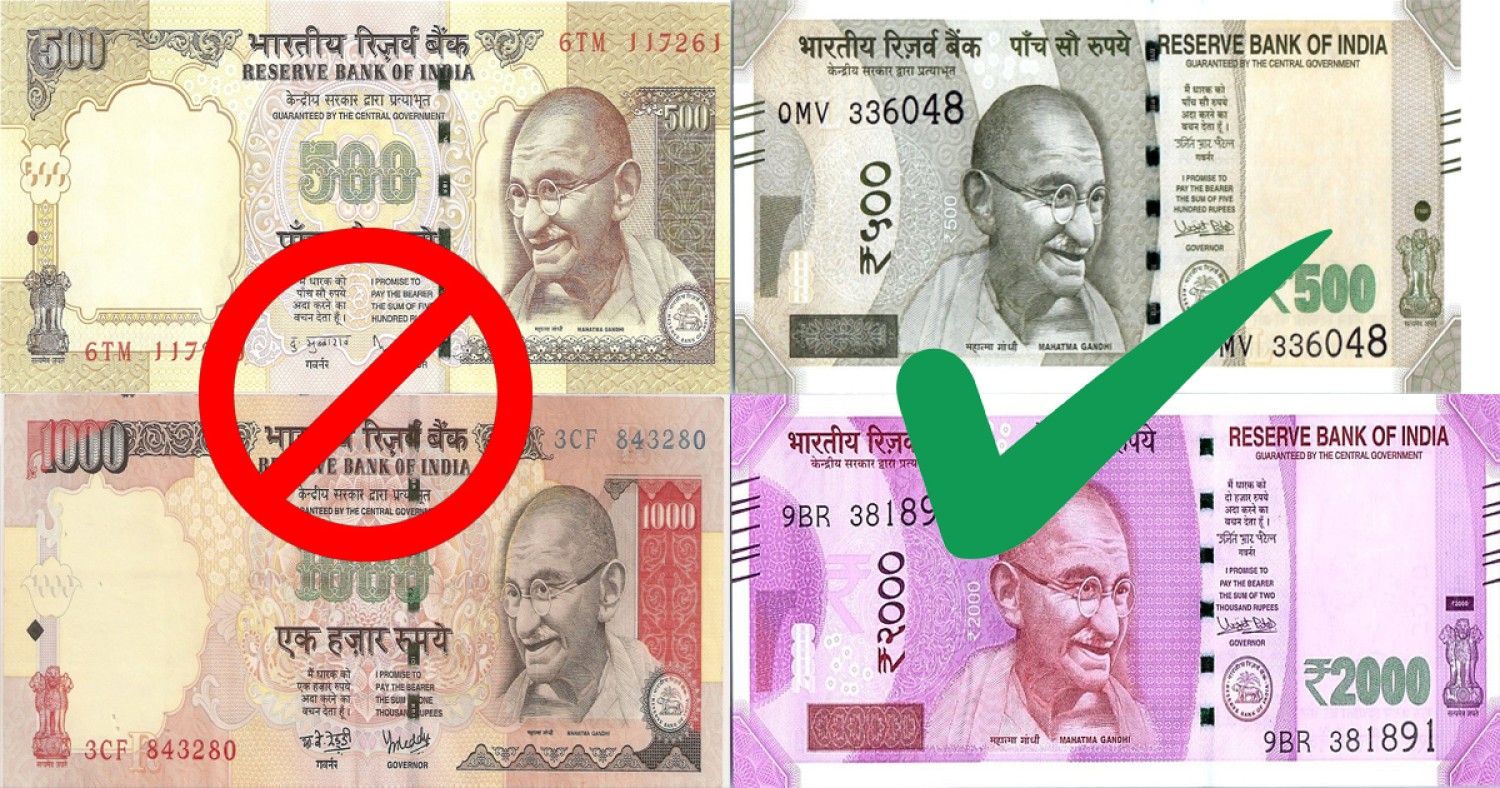DEMONETIZATION AND ITS IMPACT ON INDIAN ECONOMY
On November 8, Indian Prime Minister Narendra Modi took a historic decision by announcing that the high-denomination notes (Rs 500 and Rs 1,000) then in circulation would cease to be legal tender.
With demonetization effort 86% of India’s currency was nullified that aimed to wash the stock of ‘black market's cash supply’ and counterfeit notes out of the economy and convert it into the licit, banked and taxable, part of the economy. To reduce the impact of sudden commercial collapse, a 50 day period ensued where the population could (ideally) exchange their cancelled cash for newly designed 500 and 2,000 rupee notes or deposit them into bank accounts. Irrespective of the widespread anguish and household disturbances, an optimistic sentiment shown in favour of the decision.
Cash is the preferred mode of transaction in India and only less than half the population uses banking system for monetary transactions. An immediate public anger appeared against the mismanaged and unprepared banking system. The banks didn’t have enough of the newly designed banknotes (Rs 500 and Rs 2000) to distribute in exchange for the cancelled notes. The move has also led to a shortage of lower denomination notes such as Rs 100 and Rs 50 that are still legal tender, as people have taken to conserving whatever cash they have in hand. The demonization initiative has caused a sudden breakdown in India’s commerce and the unbanked and informal economy is hard hit. Trade across all aspects of the economy has interrupted, and sectors like agriculture, fishing, and the huge informal market were almost shut down during the initial days of announcement. The informal sector in India employs more than a majority of the workers and most transactions are in cash. Disruption to this system could endanger the employment and livelihood of weaker sections of society. The change disturbed the lives of ordinary people, led to widespread need and major job losses for the poor.
Nevertheless, although India’s demonetization move was apparently mismanaged in the beginning, the effects at micro level look advantageous. For instance, all sorts of illegal activities, like terrorist financing, etc. have been completely hit after the announcement. The demonetization process has also repaired India's counterfeiting problem for the near to mid-term. The cash-centric black market for the most part ceased to function with the nullification of the bulk of its currency. It has also been reported that the new 500 and 2,000 rupee notes are less vulnerable to counterfeiting, having advanced security features. It is also thought that the drive will wipe out a measure of corruption and tax evasion in India’s real estate market. Growth in cash-intensive sectors such as real estate, construction and FMCG is likely to take a hit in the short term as consumers are deferring purchases. The real-estate market is likely to come to a standstill with property prices likely to fall and the possible tax inquiries following demonetization will affect both consumption and investment in the formal and informal sectors. However, there is a positive side to the story, over the medium term, there would be benefits through higher government spending and greater financial inclusion. Also, the movement of household savings from physical to financial will help boost growth, according to Yes Bank BSE 0.90 % report.
With exchange of the old currency notes coming to an end, many people are forced to open accounts to save their money. It is estimated that banks have opened about 30 lakh (and still counting) new accounts since the demonetization drive began on November 8. India's largest bank, State Bank of India (SBI), with its 17,097 branches -- half of which are in the rural and semi-urban areas – is opening 50,000 accounts a day. The leading consumer internet companies in India (Flipkart, Snapdeal, Shopclues, CCAvenues, Ola and Oyo Rooms) have applauded the move, saying it will pave the way for digital payments, aid the process of financial inclusion and the overall transformation in the economy will translate into long-term benefits for the industry. Payments companies Paytm and Free charge saw a surge in adoption of their digital wallets. According to market experts, the growth of digital payments and wallets is the first phase of the impact and will give big boost to lending and credit as the digital records of merchants will expand and create more demand in the second phase.
Even though demonetization move created adverse short-term policy impact the real impact of must be assessed in the medium/long term. The reduction in overall investments, both in the formal and informal sectors, would certainly reduce economic growth potential. However, the move need to be followed up with ensuing actions to remain effective. These actions relate primarily to structural changes to make the system more lawful, reducing too much bureaucracy, make the tax system simple and transparent. In addition, a greater effort is required to include the informal sector and ensure effectiveness and the illegal activities such as generation of black money and corruption should not be channelled back into the economy.


